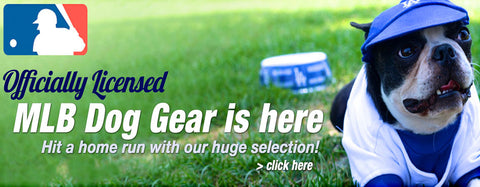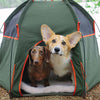Spring Training
Posted by Michael Shine
Spring the perfect time to get out with your pet and break out of your winter igloo. How about spring training for your pets? Exercise is as essential for your pet as it is for you. Young animals and healthy adults alike need lots of it, and even senior pets need a regular daily workout to maintain their health.
The type of exercise you choose depends on the age and fitness of your pet and your lifestyle. Dogs are adaptable and are happy to play Frisbee in the park or take long walks in the neighborhood. Cats might need you to play with them, fish, well sprinkle some food in the tank, and watch them swim.

Exercise is one of the best ways to spend time with your pet. It's especially essential for a large breed, working, and active breed types. Dogs are beautiful athletes, and most adapt to even strenuous exercise, provided they have had an adequate opportunity to "train," and the environmental conditions are not too extreme.
Surely you've heard the favorite pet saying, "You can't teach an old dog new tricks." Pet training is not easy, by any means. If you are dealing with a senior pet who has developed bad habits over the years, you can still train them. Or you are training your new puppy or kitten to help avoid these bad habits altogether, the best time to start teaching your pet is now – no matter what their age.
The perfect spring training
If you are a fitness trainer, this information is not new to you, but if you are like most people with fitness levels in the basic range, continue reading. Training your dog should be fun and not seem like work; some aerobic exercise, pet care, and strength training for 30 minutes a day could be enough aerobic activity.
A happy and healthy lifestyle with regular exercise is essential for both you and your canine companion. Basic manners and the training program we have put together should make this spring and summer more enjoyable. But to get the best out of your training, you have to do it right! Many workout principles that apply to humans apply to our dogs as well. For the complete training, you have to be aware of it.
Warm-up & cool-down! Begin all workouts with a warm-up period of brisk walking or easy jogging before running or doing other exercises. Even a dog bred for running cannot immediately start on a lengthy run. You have to start slow and light before you go on a 5 km run. Don't forget a similar cool-down after your workout.
Rest & recovery are essential to improve the fitness of both you and your dog. If you just started your training, it is wise to run with your dog every second day. Taking a break between workouts will allow time for muscle recovery and avoid injury while building endurance.
Certain dog breeds are better running companions than others. Some dogs bred to perform different jobs, which means each kind has its strength and endurance for exercise. Large dog breeds may be more suitable for longer runs than smaller dogs.
How far, how long, and how often? The dog's age determines the number of km, minutes, or hours you want to run with your dog, size, breed, and body strength. You must be aware of your dog's limits when exercising. Dogs, like humans, have physical and mental differences that influence performance. If you keep an eye on your dog's behavior, it is simple to figure out if he or she is comfortable with the amount of training.
Running each day is often not a problem for younger, healthy, athletic dogs, as long as the workouts are not successively intense. If you, for example, run a hard, fast, 8 km run on Tuesday, an easy 4 km recovery run would be perfect on Wednesday. A longer route, around 15 km, should be followed by a slow, comfortable series.
If your dog shows any signs of muscle soreness after a long exercise session, or lacks his usual enthusiasm for going out running, it is time to take a day off or to go for a leisurely walk. For beginners, it is best to start with easy workouts and accessible routes three times a week. If both you and your dog feel comfortable with the amount of training, you can add another day and an extra km to your schedule. It might take a few weeks, but soon you'll have a training plan that both you and your dog enjoy.

The weather! Always keep the temperature in mind before your next outdoor activity. You may feel comfortable running on a hot sunny day, but don't forget that your dog is wearing a warm, furry coat. If it's too hot, your pet could suffer from health complications or get injured. Conversely, running when it's too cold or icy can be very hard and uncomfortable for your dog – especially for the paws. Always make sure your dog is hydrated while running. Pack a bottle of water for you and one for your dog. Be aware of your dog's behavior and make a few water breaks.
Begin all workouts with a warm-up. Even a dog bred for running cannot start on a lengthy run.
Almost all dogs, especially older dogs, those with heart and lung problems, and those with thick hair coats, are likely to have trouble with hot and humid conditions. It's better to exercise in the early morning or evening when the heat is less than 80 degrees, and the humidity is less than 30 percent, thus avoiding the hot and humid conditions.
Negative Reinforcement Does Not Stop Bad Behavior
Most times, when pets display behavior that their pet parent is trying to discourage – jumping on the furniture, scratching the carpet, having a potty accident inside the home – they do so when they are alone. So when the "crime" discovered, many pet owners will show their pet the evidence of the incident (such as a wet spot on the floor) and discipline the pet then. Unfortunately, the "crime" is already long out of the pets' mind by this time, and the discipline only confuses him; it does anything but creates a clear message, which is necessary when training a pet. Rather than negative reinforcement, reward your pet's positive behavior for encouraging him to repeat the act in the future.
Professional Pet Care
What is the difference between Pet Sitting and Boarding?
Pet Sitting is when a pet care technician goes to the pets' home for care. Boarding is when the pet goes somewhere other than their home to care. With this in mind, always find a boarding company or professional that expresses the need for physical activity. Understanding the need for exercise and your pet, many boarding companies will offer a group fitness instructor with loose leash walking.
In conclusion, whatever you decide on in regards to training classes and getting your pet outside this spring, remember to make it as fun for both you and your best friend.
 5 Star Customer Reviews
5 Star Customer Reviews FREE Shipping Over $39
FREE Shipping Over $39
 Exceptional Customer Care
Exceptional Customer Care




